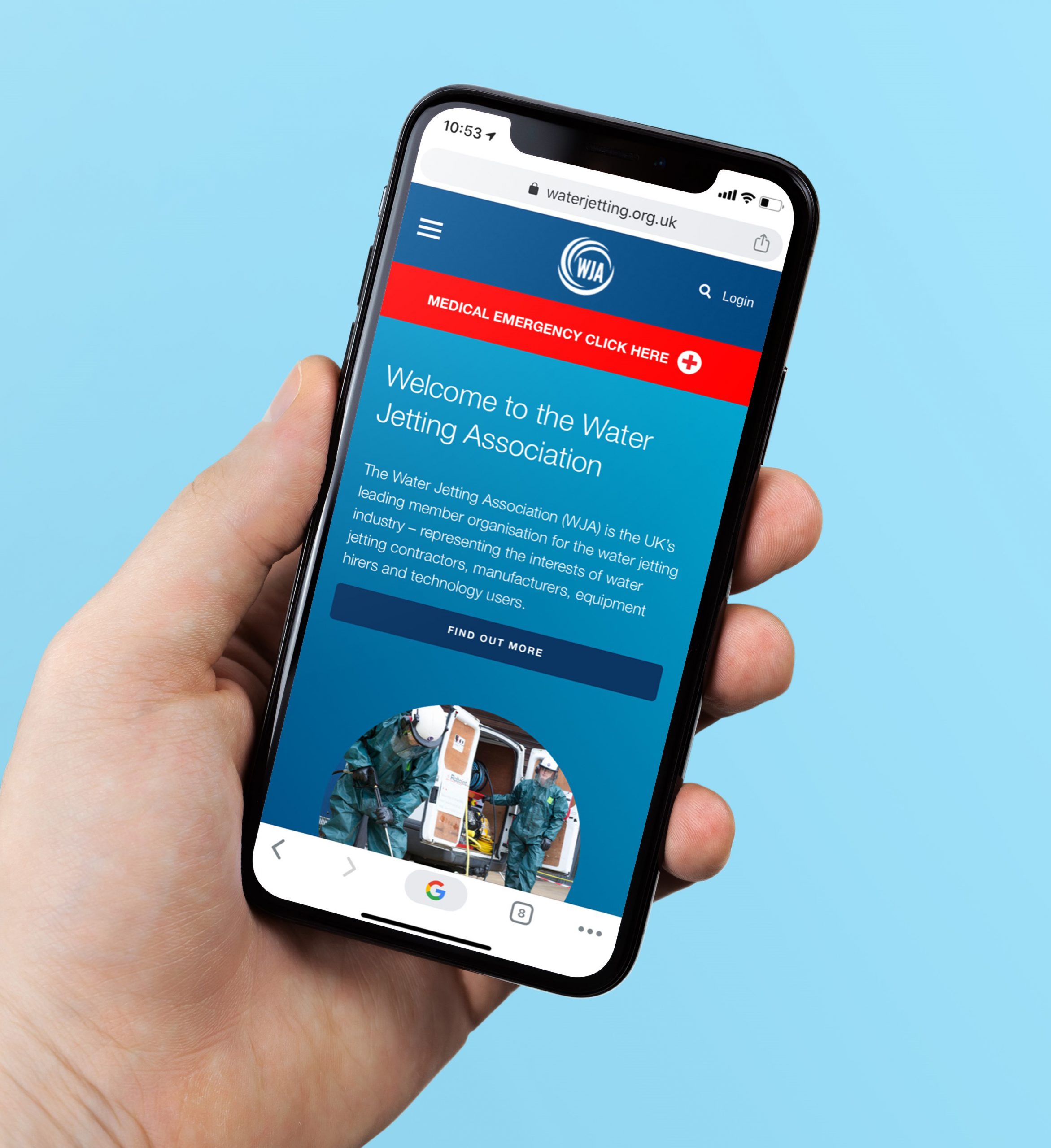Emergency Tab Gives Rapid Access to Water Jetting Injury Guidelines

The Water Jetting Association has added a medical emergency tab to its website to provide instant access to its water jetting injury management guidelines.
The guidelines were comprehensively updated in 2019 following research commissioned by the Water Jetting Association (WJA) and carried out by a team of eminent emergency doctors.
Now, anyone in the world who needs the guidelines, for example following an untoward water jetting incident, can get fast access via any page on the WJA’s website.
WJA Director David Kennedy said: “The emergency medical tab means that, when visitors arrive on our website, our water jetting injury management guidelines are always just one click away.
“One of the key findings of the research was that, once a water jetting injury has occurred, rapid access to the correct medical care is vital to minimise the risk of long-term serious medical problems.
“We want our injury management guidelines to be as widely available as possible. Thankfully, due in no small part to the professionalism of WJA members, serious incidents in the UK are rare.
“However, there is no room for complacency. We know, also, the research we commissioned and the advice built into our guidelines is being heeded across the world, so we can spread best practice globally.”
The WJA is a member organisation for the water jetting industry, representing water jetting contractors, manufacturers, hire specialists and water jetting users. It is also the UK’s largest provider of water jetting training.
Its new guidelines take the form of an algorithm which, for the first time, provides a step-by-step guide to the best treatment for high pressure fluid injection injuries (HPFII), a key risk for water jetting operatives.
The UK-based research team devised the algorithm after finding that the unique nature of HPFII injuries can confuse medical first responders and hospital medical teams.
When a water jet pierces the skin, it makes a small entry wound but then spreads widely to cause significant damage to subcutaneous tissues. It can also take contaminants, including bacteria and viruses, into the body, increasing the risk of infection.
This process can be overlooked by medical professionals, leading to delays in patients receiving the correct emergency treatment, often with serious long-term consequences.
Hydraulic fluid injection can occur at pressures as low as 7 bar, or 100 pounds per square inch (psi), far lower than the pressure achieved by many over-the-counter pressure washers and water jetting machines. Ultra-high-pressure water jetting can exceed 2,500 bar, or 36,259 psi.
Detailed recommendations, incorporated in the algorithm, include:
- As part of their first aid response, operational water jetting teams should have access to trauma kits specifically to prevent blood loss
- Individuals who experience HPFIIs, and those responsible for their wellbeing, should be trained to alert medical personnel about the serious nature of the injuries and signpost the WJA management guidelines.
- All HPFIIs should always be treated as severe traumas in a tertiary specialist hospital whenever possible
- Evacuation by air ambulance to a trauma centre with surgical facilities must be considered in the early stages
- Early access to CT and MRI scans should be obtained to assess internal injuries
- All wounds should be treated as if they are contaminated – so kept open and surgically cleaned, in stages if necessary
- Patients should be kept under an appropriate period of medical observation.
The WJA has incorporated the new guidelines in its Blue Code of Practice for the Use of High Pressure and Ultra High Pressure Water Jetting Equipment, which is currently under review. It will be doing the same with the Red Code, for drain and sewer cleaning, during 2020.
The research paper – Management of industrial high-pressure fluid injection injuries (HPFII): the Water Jetting Association (WJA) experience with water-driven injuries – has been published in the European Journal of Trauma and Emergency Surgery.
For more information about the WJA, including membership and training, telephone: +44 (0) 208 320 1090.
